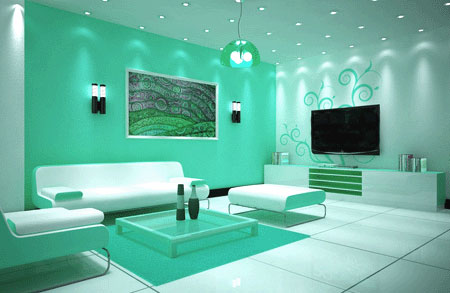
Hiding wires is a super simple DIY home staging technique that anyone can do in preparation for selling their home. This process only takes a bit of time and can be accomplished for free. Best of all, hiding power cords and other wires presents an ideal atmosphere for buyers to see the true beauty of any property. Wires are ugly and may present certain hazards that should be minimized when showing a piece of real estate. In fact, limiting the visibility of electric cords and wires is one of the best ways to clean up any area of the home.
This tutorial discusses a largely ignored practice that can truly complete any home staging plan. We will detail how to minimize wire visibility and why you should actually go through the minimal trouble of concealing wires in your house or apartment.
Reasons for Hiding Wires
Wires can be found all over the home, in the form of electric cords, phone lines, television wires, internet wires, audio/video connections, computer connections, speaker wires and many other varieties. It is difficult to find any room in the home that does not contain wires. While we are accustomed to seeing these eyesores, they are still unaesthetic and can ruin the lines of any design scheme. Wires often contrast against the natural color palate, making them even more noticeable throughout the home.
Wires might present certain dangers, since pets may chew on them and people might trip on them. Remember that the sale process can be stressful for pets and I have seen several instances where a confined pet chewed on some sort of wire as a coping mechanism.
People who come to view your home, as well as their accompanying real estate agents, will really want to look around every detail of your residence. This might place them in areas where foot traffic is usually nonexistent, potentially endangering them from slipping and falling on some errantly placed wire. Not only is this occurrence detrimental to the sale process, but this type of accident might result in litigation commenced by the injured party.
Techniques for Concealing Wires
Wires can be visually minimized through many practices and by the use of particular products. The following are all effective ways of hiding power cords and wires throughout your home:
Cords should always be fully tucked behind opaque furniture whenever possible. This is an easy fix and a bit of tape will hold them in place, if needed. If the furniture item is made of glass, or other see-through material, then the wire should be run underneath or along an opaque framework component. This might take some additional effort, but presents a cleaner aesthetic.
Wires and cords that run along wall bottoms should be hidden under moldings or under carpets if possible. If not, it is advised to invest in some special wire restraining channels that will seamlessly integrate into the décor. These products are available at many home stores and serve many uses within the staging tool kit.
Wires that run vertically up walls should be hidden by art, botanicals or the same restraining channels detailed above. Never allow an exposed cord to occupy wall space. This is design suicide. In some instances, wires can be decoratively draped or swagged. However, this can still be unappealing and dangerous in select circumstances.
Component wires for computers, media systems and phones should be hidden in any way possible. I like to use twist ties to keep them adhered to the legs of their respective shelving or cabinetry.
Exposed electric wires that should reside inside walls or ceilings, as well as exposed junction boxes or connections, should always be attended to by a qualified electrician.
Be sure to disguise wires and cords outside the home, as well. All those service wires that enter your home can often be grouped together for a cleaner look. Some wires can be painted, while others can be concealed around the foundation of the home. Always retain qualified assistance for utility wires that must be moved or adjusted.
Be sure to keep outdoor extension cords and lighting wires neatly hidden away and out of traffic paths. Wire-related tripping hazards are often compounded outside any home.
Hiding Wires is a Very Good Idea
While not a major concern for most people or properties, wires and electric cords should be considered carefully and dealt with accordingly. I have seen many lovely homes that were simply ruined by vast numbers of wires all over the interior and exterior. In these cases, I was able to impart enhanced appeal to the property within an hour, simply by managing the visual presentation of these ugly, but necessary nuisances.
To get advice about how to hide troublesome wires or cord, feel free to contact me anytime. Wires are one of my all-time pet-peeves, so I am happy to help!




